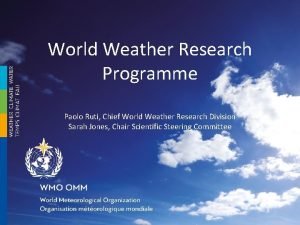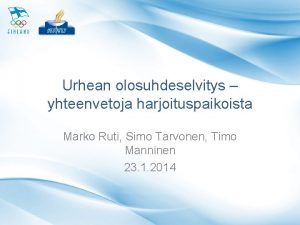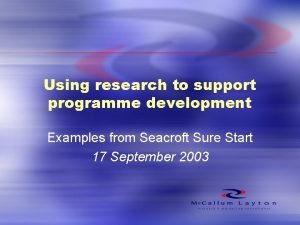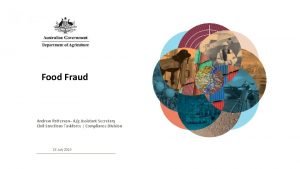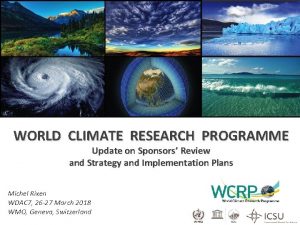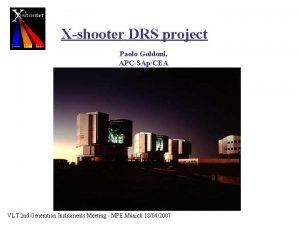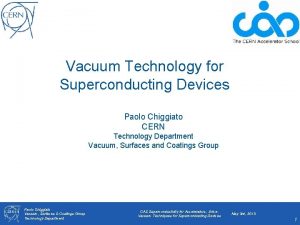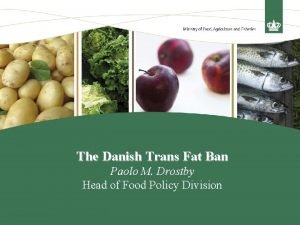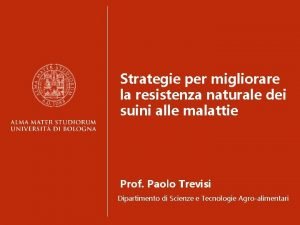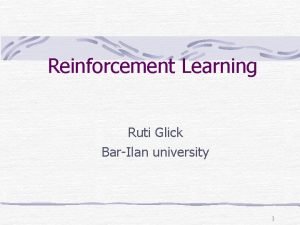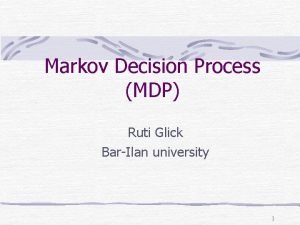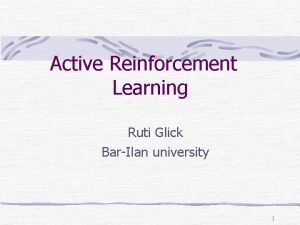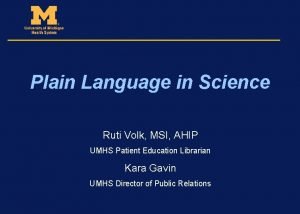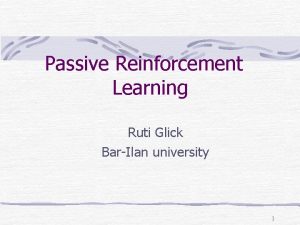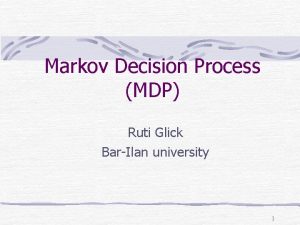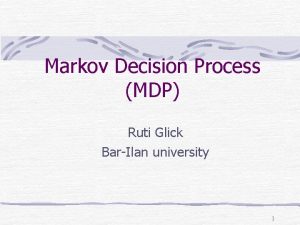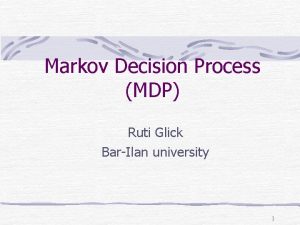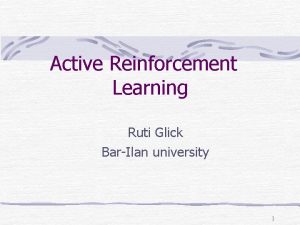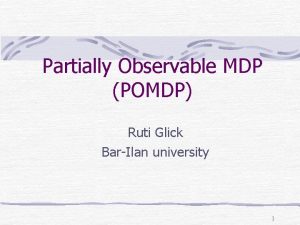World Weather Research Programme Paolo Ruti Chief World


















- Slides: 18

World Weather Research Programme Paolo Ruti, Chief World Weather Research Division Sarah Jones, Chair Scientific Steering Committee

Historical background 1950 63 1967 1970 ---- 1974 GARP (Global Atmospheric Research Programme) established by WMO (World Meteorological Organization) WMO the specialized agency of the United Nations for meteorology World Weather Watch 1985 1998 WGNE, Working Group on Numerical Experimentation Conduct of GARP Regional Experiments: GATE: GARPAtlantic. Tropical. Experiment MONEX: Monsoon. Experiment ALPEX: Alpine. Experiment AMEX: Air. Mass. Transformation. Experiment WCRP, World Climate Research Programme (WMO, ICSU) 2004 2014 THORPEX (Observing System and Predictability Experiment) established as a WWRP Working Group WWRP (World Weather Research Programme) established in cooperation with GEWEX. MAP & Sidney 2000 1 st World Weather Research Open Science Conference, Canada

Improving the skill – big resources ECMWF’s forecast Z 500 h. Pa extra-tropical error growth over the last two decades RMS (m) WMO, 2015: Seamless Prediction of the Earth System: from Minutes to Months, (G Brunet, S Jones, PM Ruti Eds. ), (WMO-No. 1156), (ISBN 978 -92 -63 -11156 -2), Geneva.

WWRP Mission • The World Weather Research Programme (WWRP) is WMO’s programme that promotes international and interdisciplinary research for more accurate and reliable forecasts from minutes to seasons, • expanding the frontiers of weather science to enhance society’s resilience to high-impact weather and the value of weather information for users. • WWRP aims at Seamless Prediction by increasing convergence between weather, climate and environmental approaches and strengthening interdisciplinary collaborations.

Around 4 societal challenges URBANIZATION HIGH IMPACT WEATHER WATER NEW TECHNOLOGIES With its new implementation plan, WWRP will ensure the realization of a research strategy towards the seamless prediction of the Earth system from minutes to months. This research strategy is developed to face four scientific and societal challenges identified by the Commission for Atmospheric Sciences : High-Impact Weather, Water, Urbanization and Evolving Technologies.

WWRP Implementation Plan Structure

WWRP Structure WWRP Working Groups WWRP Core Projects Sand&Dust Storm Research Development/ Forecasting Demonstration Projects

High Impact Weather Co-chairs: Frédéric Vitart (ECMWF), Andrew Robertson (IRI) Project Office: KMA/NIMR Evaluate potential predictability of sub-seasonal events through a multi-model approach. Understand systematic errors and biases in the sub-seasonal to seasonal forecast range Focus on specific extreme event case studies increasing resilience and improving adapting capacity.

WWRP Implementation Plan 2016 -2023 → Booklet 1: → Booklet 2: Introduction and broader vision – eight years plan Concrete actions proposed by WGs and projects for each selected activity – 2 year rolling basis Societal Challenges HIGH IMPACT WEATHER WATER URBANIZATION NEW TECHNOLOGIES Action Areas Address Limitations Uncertainty Fully Coupled Applications Verification Attribution Integrated Water Cycle New Observations Precipitation Processes Hydrological Uncertainty Understand Needs Observations & Processes Urban Prediction Advanced Methods Support Facilities Tools New Observations Future GOS Selected Activities For each Action Area the WWRP Working Groups and Projects proposed Selected Activities, which also offer points for collaborations

WWRP Implementation Plan Structure

Next 2 year concrete actions → Booklet 2 provides activities that are planned by Projects and Working Groups to help achieving the overall WWRP programmatic goals for each of the four Themes and 18 Action Areas, based on last year’s round of contributions → Working groups and projects were now asked to update this information by listing concrete activities along with a time frame

Preliminary evaluation of WG /Project Feedback → Feedback received from all WGs and Projects, despite: ETWM, SDS-WAS and SERA. Few info only from DAOS → Feedback overall quite comprehensive, covering most of the topics to a good extent → Only few suggestions for concrete activities so far in the following action areas: (activities listed in current version of IP 2 versus new feedback provided by the WGs/Projects, not counting missing feedback) AA 7: Water – Integrated water AA 10: Water – Hydrological Uncertainty AA 12: Urbanization – Observations & Processes (chemical aspects) → Feedback files from all WG / Projects, as well as compilation of all in one file are available at https: //goo. gl/TBkt. We

Preliminary evaluation of WG /Project Feedback Suggested activities cover • Contributions to many ongoing or approaching initiaitives, e. g. NAWDEX, Meso. VICT, HIGHWAY, ICE-POP, UPDRAFT • Suggestions for workshops on particular topics, or symposia along with major conferences 2017 (Cape Town, EMS, …) • Several workshops already held successfully • Members attending relevant conferences, are members or contribute to panels etc. • Facilitation of data sets and their usage → Feedback partly vague, how concrete can/should it be? → Some activities “only” covered by workshops. OK for workshop activities, but enough for others? More concrete actions needed?

High Impact Weather Action Area 1: ADDRESS LIMITATIONS Increase knowledge of the factors limiting the capability to predict, communicate and mitigate the impacts of high-impact weather events; identify how these limitations can be overcome; demonstrate the resulting improvements for specific high-impact weather events from minutes to months, from global to local, for different users in different parts of the world PROGRAMMATIC GOAL: Use diagnostic and verification information to identify capabilities and limitations in predictions of high-impact weather on time scales out to seasonal SELECTED ACTIVITY: Continue to develop the S 2 S database and use it to assess stateof-the art models and their skill at predicting high-impact weather events such as tropical cyclones, heat/cold waves and their socio-economic impacts [S 2 S, WGTMR]


Next Steps • Preparation of next two-year priorities in terms of programmatic goals and activities - Review • Agreeing review process for S 2 S • Long term priorities for possible second phase • Science for Operationalization • Data Assimilation & Observations • Coordinated experiments

What successful people read before bed? Google: seamless prediction WMO https: //www. wmo. int/media/content/seamless-prediction-minutes-months

Thank you Merci
 Paolo ruti
Paolo ruti Marko ruti
Marko ruti Lesson 3 commander in chief and chief diplomat
Lesson 3 commander in chief and chief diplomat Weather symbols station model
Weather symbols station model Whether the weather be cold tongue twister
Whether the weather be cold tongue twister Her poem clothing
Her poem clothing Its stormy
Its stormy Whether the weather be fine
Whether the weather be fine Heavy weather by weather report
Heavy weather by weather report Capital weather gang weather wall
Capital weather gang weather wall Research programme example
Research programme example Andrew patterson world food programme
Andrew patterson world food programme World climate programme
World climate programme How does wind affect weather and climate
How does wind affect weather and climate Paolo goldoni
Paolo goldoni Paolo chiggiato
Paolo chiggiato Ferruccio di paolo
Ferruccio di paolo Paolo drostby
Paolo drostby Paolo trevisi unibo
Paolo trevisi unibo
